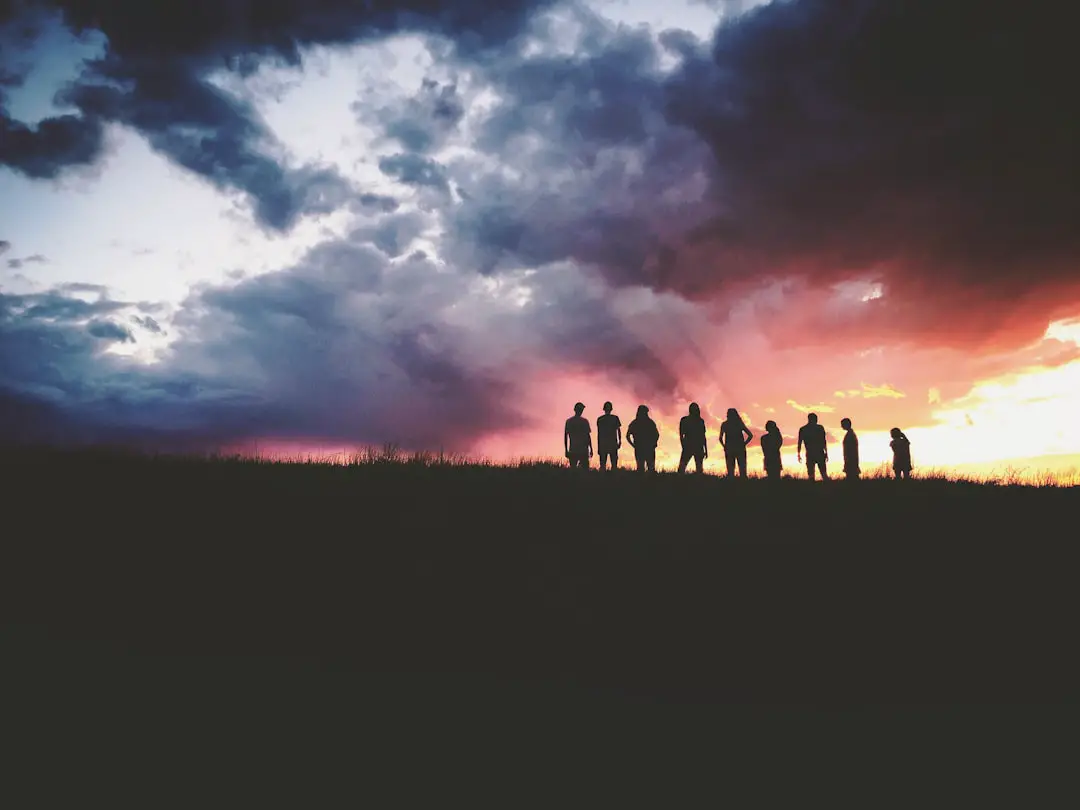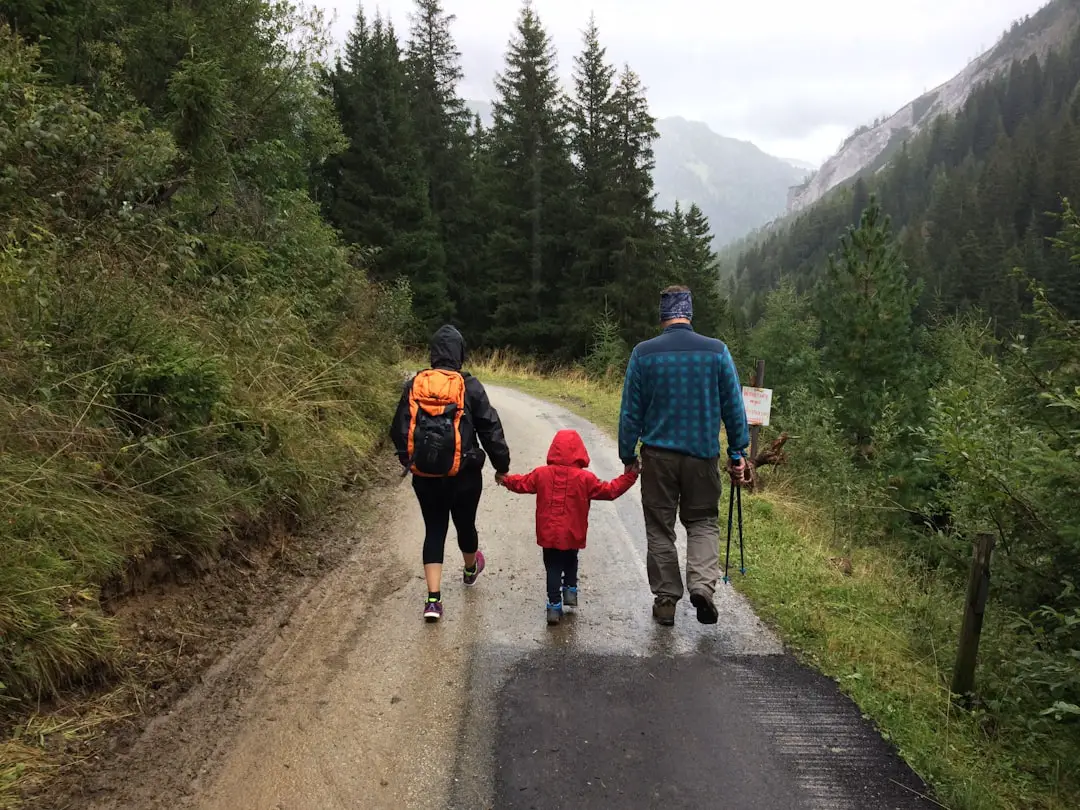Support our educational content for free when you purchase through links on our site. Learn more
How Does Walkathon Work? [2024] 🚶♀️
Have you ever wondered how a walkathon works? How do they raise money? How long do they last? And what’s the point of organizing one? If you’re curious about walkathons and want to learn more, you’ve come to the right place! In this comprehensive guide, we’ll walk you through everything you need to know about walkathons, from their history and purpose to the logistics of planning and organizing one. So put on your walking shoes and let’s dive in!
Table of Contents
- Quick Answer
- Quick Tips and Facts
- Background: The Evolution of Walkathons
- How Does a Walkathon Fundraiser Work?
- What Causes are Suited for Walkathon Fundraising?
- The Role of Walkathon Fundraising Software
- How Do I Get Started Planning a Walkathon Fundraiser?
- FAQ
- Conclusion
- Recommended Links
- Reference Links
Quick Answer
A walkathon is a fundraising event where participants gather donations based on the distance they agree to walk. It’s a fun and engaging way to raise money for a cause while promoting an active and healthy lifestyle. Walkathons can be organized by schools, sports teams, non-profit organizations, and other community groups. Participants collect pledges from supporters, who pledge a certain amount of money per unit of distance walked. After the event, the organization collects the donations and uses them to support their cause.
👉 CHECK PRICE on: Walkathon Fundraising Software | Walkathon Merchandise
Quick Tips and Facts
- Walkathons are a popular fundraising idea because they bring communities together, promote an active lifestyle, and involve people of all ages.
- The success of a walkathon depends on the active participation of organizers, participants, and supporters.
- Walkathons are well-suited for various causes and organizations, including schools, sports teams, scout troops, and church youth groups.
- Walkathon fundraising software can simplify the process of collecting donations and managing participant registrations.
- Planning a walkathon involves identifying your cause, selecting the right software, spreading the word, hosting an enjoyable event, and following up with supporters.
Now that you have a quick overview, let’s explore the world of walkathons in more detail!
Background: The Evolution of Walkathons

Walkathons have a rich history that dates back several decades. The concept of a walkathon originated in the early 20th century and gained popularity as a way to raise funds for charitable causes. The first recorded walkathon took place in the United States in the 1920s, during the Great Depression. It was a marathon-style event where participants walked continuously for days or even weeks to raise money for various charities.
Over the years, walkathons evolved and became more organized. They transitioned from endurance events to community-based fundraisers, attracting participants of all fitness levels. Today, walkathons are widely recognized as a fun and inclusive way to support a cause, promote physical activity, and bring communities together.
How Does a Walkathon Fundraiser Work?
A walkathon fundraiser works by combining physical activity with fundraising efforts. Here’s a step-by-step breakdown of how it typically works:
-
Organizing the Event: The first step in planning a walkathon is to gather a team of organizers who will be responsible for coordinating the event. This includes selecting a date, securing a location, and determining the logistics of the walkathon.
-
Participant Registration: Once the event details are finalized, participants can register for the walkathon. This can be done through an online registration platform or through traditional methods like paper forms. Participants may be required to pay a registration fee, which can contribute to the fundraising goal.
-
Collecting Pledges: Participants are then encouraged to collect pledges from their friends, family, and colleagues. Pledges can be made on a per-unit-of-distance basis, where supporters pledge a certain amount of money for each unit of distance walked by the participant. For example, a supporter may pledge $1 for every mile walked.
-
The Walkathon Event: On the day of the walkathon, participants gather at the designated location and begin their walk. The distance can vary depending on the event, ranging from a few miles to a full marathon. Participants can walk individually or as part of a team, and they can choose their own pace.
-
Celebration and Fund Collection: After completing the walk, participants and supporters come together to celebrate their achievements. This can include award ceremonies, entertainment, and refreshments. Organizers collect the pledged donations from participants and supporters, ensuring transparency and accountability.
-
Donation Distribution: The funds collected during the walkathon are then distributed to the designated cause or organization. This can be done through a secure online payment system or by traditional methods like checks or cash.
By combining physical activity with fundraising efforts, walkathons provide a unique and engaging way for individuals to make a positive impact on their communities.
What Causes are Suited for Walkathon Fundraising?
Walkathons are well-suited for a wide range of causes and organizations. Here are some examples of causes that can benefit from walkathon fundraising:
-
Health and Wellness: Walkathons can be organized to raise funds for medical research, disease prevention, mental health awareness, or promoting an active lifestyle.
-
Education: Schools and educational institutions often organize walkathons to raise funds for extracurricular activities, scholarships, or facility improvements.
-
Charitable Organizations: Non-profit organizations can use walkathons as a means to raise funds for their programs and services. This can include organizations focused on poverty alleviation, environmental conservation, animal welfare, and more.
-
Community Development: Walkathons can be organized to support community development initiatives, such as building playgrounds, improving infrastructure, or funding local projects.
-
Social Causes: Walkathons can raise awareness and funds for social causes like gender equality, racial justice, LGBTQ+ rights, and other important issues.
When choosing a cause for your walkathon, consider the interests and passions of your target participants and supporters. By aligning the cause with their values, you can maximize participation and fundraising success.
The Role of Walkathon Fundraising Software
Walkathon fundraising software plays a crucial role in streamlining the registration and donation collection process. Here’s how it can benefit organizers and participants:
-
Participant Registration: Walkathon fundraising software allows participants to register online, saving time and effort for both organizers and participants. It provides a user-friendly interface where participants can enter their personal information, select their distance goal, and create personalized fundraising pages.
-
Donation Collection: Fundraising software simplifies the process of collecting donations by providing secure online payment options. Participants can share their fundraising pages with friends and family through social media and email, making it easy for supporters to pledge donations.
-
Fundraising Progress Tracking: Walkathon fundraising software provides real-time tracking of fundraising progress, allowing participants to see how close they are to reaching their goals. This can motivate participants to continue their fundraising efforts and engage their supporters.
-
Communication and Engagement: Fundraising software often includes built-in communication tools that allow organizers to send updates, reminders, and thank-you messages to participants and supporters. This helps maintain engagement and build a sense of community around the event.
-
Data Management: Walkathon fundraising software simplifies data management by automatically organizing participant information, donation records, and event details. This saves organizers time and ensures accurate record-keeping.
By leveraging the power of technology, walkathon fundraising software enhances the overall experience for organizers, participants, and supporters, making the event more efficient and effective.
How Do I Get Started Planning a Walkathon Fundraiser?
Planning a walkathon fundraiser requires careful preparation and organization. Here are the key steps to get you started:
-
Identify Your Cause: Determine the cause or organization you want to support through your walkathon. Consider the impact you want to make and the alignment with your target participants and supporters.
-
Gather a Team: Assemble a team of dedicated organizers who will help you plan and execute the walkathon. Assign roles and responsibilities to ensure a smooth operation.
-
Set Goals: Define your fundraising goals and establish a budget for the event. This will guide your planning process and help you measure the success of your walkathon.
-
Select the Right Walkathon Fundraising Software: Research and choose a walkathon fundraising software that meets your needs. Look for features like participant registration, donation collection, progress tracking, and communication tools.
-
Secure a Location: Find a suitable location for your walkathon. Consider factors like accessibility, safety, and amenities. If necessary, obtain any required permits or permissions.
-
Spread the Word: Promote your walkathon through various channels, including social media, email newsletters, local newspapers, and community bulletin boards. Encourage participants to share their fundraising pages with their networks.
-
Host an Enjoyable Event: Plan the logistics of the walkathon, including route mapping, water stations, restrooms, and entertainment. Create a positive and engaging atmosphere that encourages participants to have fun while supporting the cause.
-
Protect Your Organization: Ensure you have the necessary insurance coverage and liability waivers to protect your organization from any potential risks or accidents during the walkathon.
-
Follow Up with Supporters: After the walkathon, express your gratitude to participants and supporters. Share the impact of their contributions and keep them informed about future events or initiatives.
By following these steps, you’ll be well on your way to planning a successful walkathon fundraiser that makes a meaningful difference.
FAQ

How does a walkathon make money?
A walkathon makes money through participant registration fees and donations collected from supporters. Participants are encouraged to collect pledges from their friends, family, and colleagues, who pledge a certain amount of money per unit of distance walked. The funds collected are then used to support the designated cause or organization.
Read more about “How Do Walkathons Raise Money? … 🚶♀️💰”
What is the point of a walkathon?
The point of a walkathon is to raise funds for a cause or organization while promoting physical activity and community engagement. Walkathons provide an opportunity for individuals to make a positive impact on their communities by participating in a fun and inclusive event.
Read more about “What is the point of a walkathon?”
How many miles is a walkathon?
The distance of a walkathon can vary depending on the event and the preferences of the organizers. Walkathons can range from a few miles to a full marathon distance. The chosen distance should be challenging enough to engage participants while considering their fitness levels and the overall event logistics.
Read more about “How many miles is a walkathon?”
How long does a walkathon last?
The duration of a walkathon can vary depending on the event format and the chosen distance. Some walkathons are completed within a few hours, while others may span multiple days. It’s important to consider the comfort and safety of participants when determining the duration of the event.
If you have any other questions about walkathons, feel free to reach out to us!
Read more about “How do walking tours work? … 🚶♀️”
Conclusion

In conclusion, walkathons are a fantastic way to raise funds for a cause while promoting an active and healthy lifestyle. By organizing a walkathon, you can bring communities together, engage participants of all ages, and make a positive impact on your chosen cause or organization. Remember to plan carefully, leverage walkathon fundraising software, and engage your participants and supporters throughout the process. So, why not lace up your walking shoes and start planning your own walkathon today? Together, we can make a difference!
And don’t forget to check out these helpful links for further reading:
- Fundraising Ideas
- Technology for Walkathons
- Event Promotion
- Health Benefits of Walkathons
- Global Walkathon Events
- What are the Benefits of Walking Exercise? 2024 🚶♀️
Recommended Links
- 👉 CHECK PRICE on: Walkathon Fundraising Software
- 👉 Shop Walkathon Merchandise on: Amazon | Walmart | Etsy
- 👉 Shop Walkathon Fundraising Books on: Amazon
Reference Links
- Planning a Walk-a-Thon Fundraiser: Your Questions Answered
- Fundraising Ideas
- The 20 Best Online Donation Tools
Now that you have all the information you need, it’s time to start planning your own walkathon and make a difference in your community. Happy walking!
